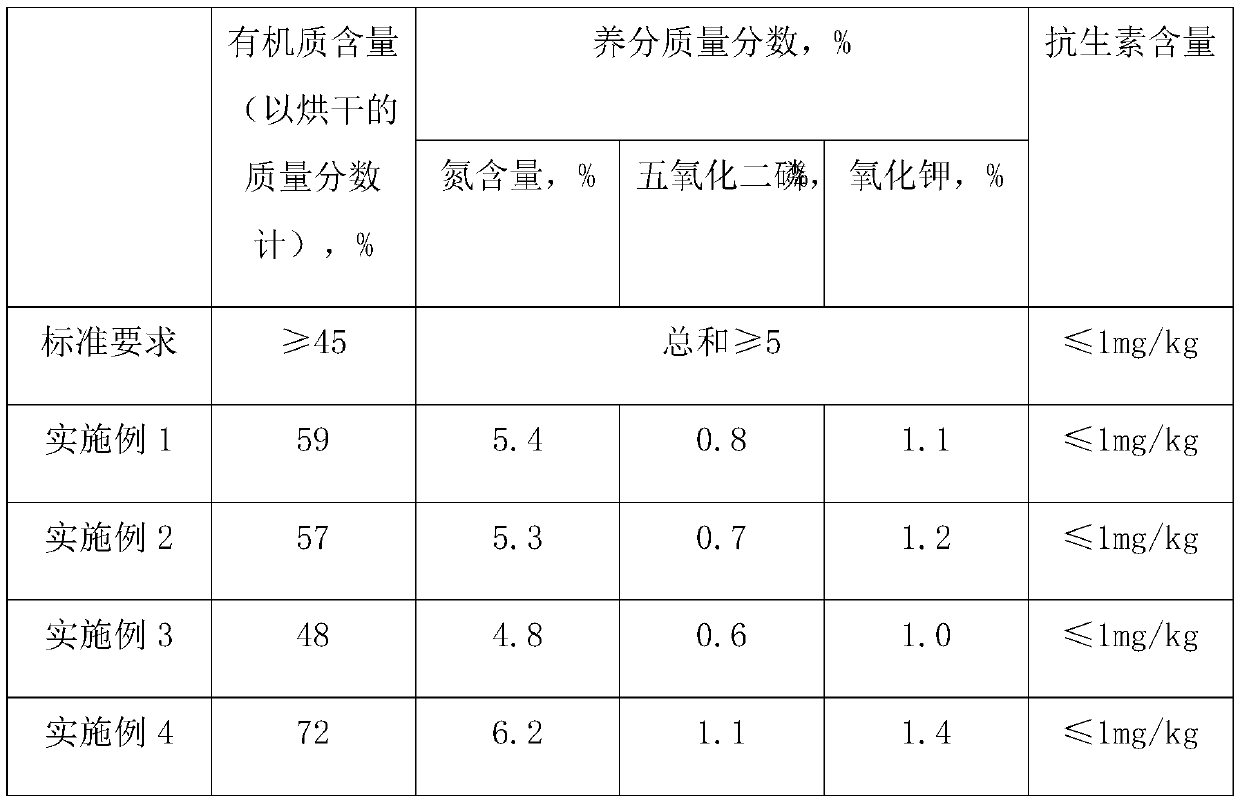Treatment method and application of antibiotic mushroom dregs
A technology of antibiotic residues and treatment methods, applied in the direction of microorganism-based methods, biochemical equipment and methods, applications, etc., can solve problems such as incomplete degradation and inability to degrade drug-resistant antibiotics, so as to improve degradation activity and promote expansion reproductive effect
- Summary
- Abstract
- Description
- Claims
- Application Information
AI Technical Summary
Problems solved by technology
Method used
Image
Examples
Embodiment 1
[0032] (1) 90g of tetracycline scum samples are placed in the reaction tank (moisture content 85%, dry basis organic components contain 90%, inorganic components 10%, cephalosporin C content 7050mg / kg dry scum, pH5.5), Under the conditions of room temperature 20°C and microwave power 600W, the microwave heating process takes about 200 seconds. After reaching the target temperature of 100°C, continue processing for 30 minutes in constant power mode;
[0033] (2) Inoculate the slant preservation of Phanerochaete chrysosporium (purchased with Beijing Kezhan Biotechnology Co., Ltd.) into potato dextrose solid medium, and place it at 35° C. to cultivate for 3-5 days until a large number of spores are formed; Add a certain amount of Tween80-NaCl solution to the solid medium, gently scrape off the spores with a triangular scraper, mix them into water, absorb the aqueous solution containing spores, filter to remove mycelia, count the filtrate on a hemocytometer and dilute to a spore co...
Embodiment 2
[0038] Same as Example 1, the difference is that the antibiotic residue is oxytetracycline residue.
Embodiment 3
[0040] The same as in Example 1, the difference is that the antibiotic residue prepared in step (1) is directly mixed with pig manure, and the Phanerochaete chrysosporium culture solution of the same quality is added, and after uniform mixing, aerobic composting fermentation is carried out.
PUM
 Login to View More
Login to View More Abstract
Description
Claims
Application Information
 Login to View More
Login to View More - R&D
- Intellectual Property
- Life Sciences
- Materials
- Tech Scout
- Unparalleled Data Quality
- Higher Quality Content
- 60% Fewer Hallucinations
Browse by: Latest US Patents, China's latest patents, Technical Efficacy Thesaurus, Application Domain, Technology Topic, Popular Technical Reports.
© 2025 PatSnap. All rights reserved.Legal|Privacy policy|Modern Slavery Act Transparency Statement|Sitemap|About US| Contact US: help@patsnap.com

